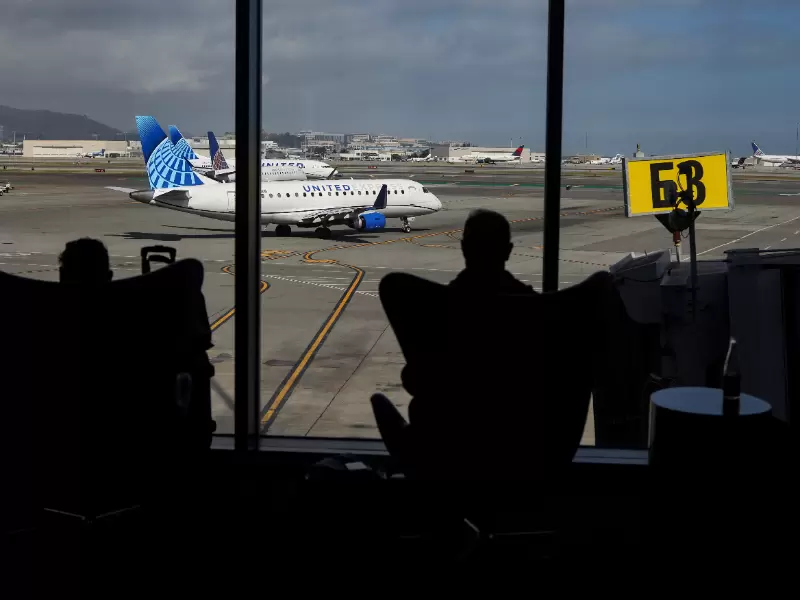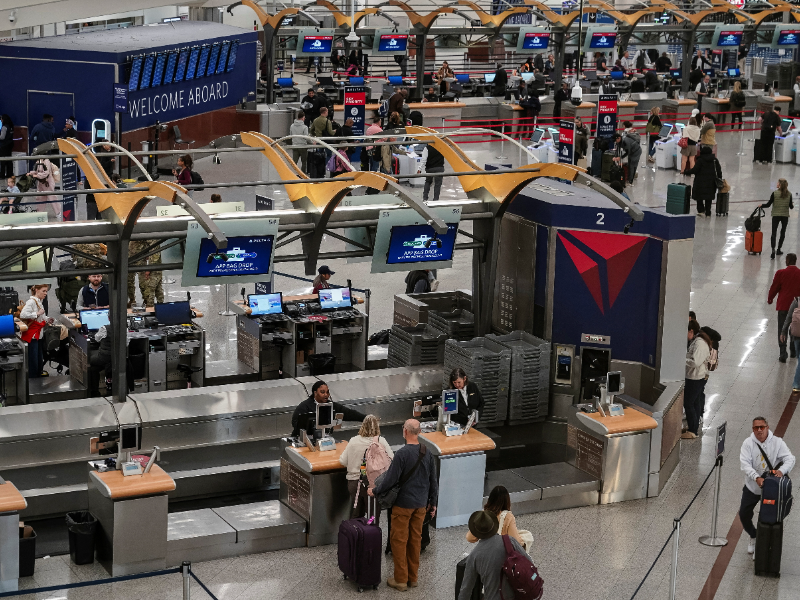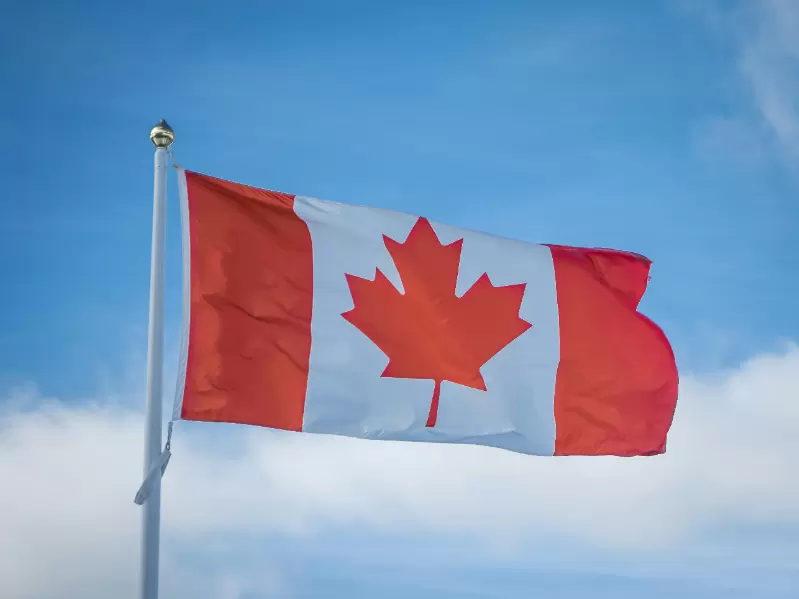US flight cuts send airlines, travelers scrambling
Even before the shutdown, the FAA was already short about 3,500 air traffic controllers, and many were working mandatory overtime and six-day weeks.
 Passengers look at a commercial airplane at San Francisco International Airport in San Francisco, California, U.S., November 6, 2025. / REUTERS/Carlos Barria
Passengers look at a commercial airplane at San Francisco International Airport in San Francisco, California, U.S., November 6, 2025. / REUTERS/Carlos Barria
U.S. airlines scrambled on Nov. 6 to rejig schedules and field calls from anxious customers after the Trump administration ordered flight reductions at major airports due to a shortage of air traffic controllers during the longest government shutdown in history.
The cuts, set to begin on Nov. 7, were expected to hit hundreds of thousands of travelers with little notice. Aviation analytics firm Cirium estimated the reductions would cancel up to 1,800 flights and cut 268,000 airline seats a day in the U.S. International flights are not affected.
The low-demand travel period made it easier for airlines to rebook passengers by cutting flight frequencies on some routes and using larger planes. Analysts predict the impact on earnings will be modest, provided the shutdown ends before the peak Thanksgiving travel period.
ALSO READ: US FAA to detail flight cut plan at major airports later on Nov. 7
Transportation Secretary Sean Duffy on Nov. 5 ordered 10 percent flight cuts to start on Nov. 7 at 40 major U.S. airports, including in New York, Los Angeles and Chicago, affecting both commercial and cargo services.
The Federal Aviation Administration revised the plan and said late on Nov. 6 airlines must cut 4 percent of domestic flights starting at 6 a.m. EST (1100 GMT) on Nov. 7 daily through Nov. 10, then ramping up to a full 10 percent cut by Nov. 14.
The FAA is also restricting space launches but not requiring cuts to international flights. The FAA also warned it could reject specific cuts if they disproportionately impacted certain communities and could cut up to 10 percent of general aviation flights at high-traffic airports if staffing issues arose.
Airlines face the challenge of adjusting flight schedules on short notice while minimizing the impact on passengers and crew members.
In a memo to staff, American Airlines Chief Operating Officer David Seymour wrote: "You deserve the same level of certainty as our customers," and noted the carrier was trying its best to avoid disrupting the work schedules of its pilots and flight attendants.
Major airlines proactively offered customers greater flexibility regarding their travel plans, a move reinforced by the Transportation Department confirming late on Nov. 6 that passengers are entitled to a full refund. But it said airlines are not required to provide reimbursement for hotels or meals for cancellations since they are not at fault.
Airline flight reduction plans
In line with the federal directive, American will reduce its schedules by 4 percent across 40 airports, amounting to around 220 flights canceled each day from Nov. 7 through Nov. 10.
The vast majority of these cancellations are for regional flights, allowing the airline to maintain approximately 6,000 daily flights and minimize customer impact, it said.
Delta Air Lines announced the cancellation of about 170 U.S. flights on Nov. 7, with fewer expected on Nov. 8 due to lower travel volume. The carrier normally operates 5,000 daily flights globally.
United Airlines said it plans to cut 4 percent of its flights Nov. 7 through Nov. 9, resulting in less than 200 daily cancellations. The Chicago-based airline operates around 4,500 flights a day. Southwest Airlines will cancel about 120 flights on Nov. 7.
Alaska Airlines has begun canceling a limited number of flights from Nov. 7. The carrier said that most cancellations would affect high-frequency routes, allowing the majority of customers to be re-accommodated with minimal disruption.
Discount carrier Frontier said most of its flights would operate as planned, though in a LinkedIn post its CEO Barry Biffle advised customers traveling to funerals or other critical events over the next 10 days to book backup tickets on different airlines.
Using bigger planes
Airlines can lessen the disruption by using bigger aircraft, a strategy they already employ to deal with congestion in New York-area airports.
Still, passengers inundated carriers on social media platforms like X with questions and comments as they tried to clarify their travel plans.
While sales of its "disruption assistance" service have risen steadily since the shutdown began on Oct. 1, travel app Hopper reported an overnight jump of nearly 60 percent after the government announced flight cuts.
The FAA cited a safety assessment of air traffic controllers in ordering the unprecedented cuts, but officials insisted it is safe. "It's safe to fly today, and it will continue to be safe to fly next week," Duffy said.
FAA Administrator Bryan Bedford reiterated on Nov. 6 that the agency would not hesitate to take further action to make sure air travel remains safe.
During the closure, 13,000 air traffic controllers and 50,000 security screeners have been forced to work without pay.
Absenteeism has risen to 30 percent or more at some airports as the workers turn to second jobs to feed their families or are unable to afford childcare.
Even before the shutdown, the FAA was already short about 3,500 air traffic controllers, and many were working mandatory overtime and six-day weeks. Airlines have estimated that at least 3.2 million travelers have been delayed during the shutdown.
Stress for passengers
Following a dip in corporate and leisure bookings in the first half of the year, U.S. airlines had projected a period of steady demand this quarter. Yet, even as reduced capacity is expected to drive up airfares, the uncertainty caused by the shutdown may depress consumer travel spending.
Passenger traffic declined in the first week of November from a year ago after rising in October, data from the U.S. Transportation Security Administration showed.
Airlines for America CEO Chris Sununu urged customers to "stick with their current travel plans" amid a drop in bookings. But even before the new flight cuts went into effect, customers said flight delays and cancellations were causing misery.
Delaware-based Grace Logeman, 40, drove two hours on Nov. 6 to Newark, New Jersey for a Frontier flight to Atlanta that was delayed by three hours. The delay caused her to miss a connecting flight to the Dominican Republic for her sister's birthday.
"I'm devastated," Logeman said while on hold with the airline's customer service line. "As far as the ongoing shutdown...it's hurting me. I'm the one sitting here now."
ADVERTISEMENT
ADVERTISEMENT
E Paper
Video



 Reuters
Reuters


.JPG)








Comments
Start the conversation
Become a member of New India Abroad to start commenting.
Sign Up Now
Already have an account? Login